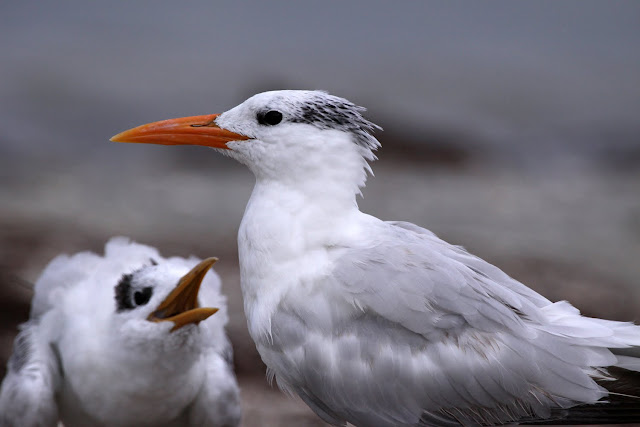Our trip was AMAZING! We saw so many wonderful things, and I have so much to blog about, so I thought I would start with each day in order and what we saw on that day:
Upon arrival into Fort Myers at sometime around 2 in the afternoon on Monday, we headed for the hotel in Bonita Springs to drop off luggage and start exploring. Our first stop was Ding Darling because the anticipation of finding every wader you can think of here was overwhelming. Near the entrance, we spotted an Osprey on a tall snag. Now, that's a pretty good start to our short afternoon jaunt!

We then pay our entrance fee and follow the road at a crawl, not wanting to miss a single thing. We see that we are surrounded in mangroves and are at the edge of our seats waiting for the next sighting. A few miles later, we start to think that we came at the wrong time. We were not seeing anything, which was shocking, because everything I have read and saw in pictures proved that this place was going to be a wonderland. We kept going and finally saw this juvy Yellow-crowned Night Heron just a few feet from the car. (Things were looking better we thought...)

We rounded a curve, pulled over to look at our first Tri-colored Heron fly over and noticed a Raccoon cross the road...

After that stop, we see a small bird roosting on a wire and took a closer look. It was our first Loggerhead Shrike but not our last. (We saw many on wires in the coming days.)

Next, we spot a Pileated Woodpecker up high and stopped for some shots. They make them much larger in Florida, than in Illinois. It was a really cool sight, since our heron sightings were almost zero for the day.

We left Ding Darling as our road came to an end, and headed toward Cape Coral since the day had a few more hours of sunlight and our thirst for nature wasn't quenched. The city is known for its Burrowing Owl population and I had a map of burrow locations. I was VERY excited! Adding to my Life Owl List was one of the attractions for choosing this area to vacation.
We get to Cape Coral, pay $2 to cross a bridge, and begin our journey in search of the tiny owls. We look for wooden "T" pickets (The pickets serve 2 purposes. It provides a roost for the owls, and marks the burrow so that people don't step on them.) in yards and start to see a few. The day is almost at a close and the clouds start to take over the sky, but we didn't care so much, as we just wanted to spot a few and save the cameras for a better sky on another day. We spot our first occupants:

They were so small! What we didn't see until further inspection was another one was on the ground. So there are 3 of them in this photo! We spotted a few more along some neighborhood streets, but this was our only one with multiple owls. We marked our locations on the map and planned for another day. We couldn't wait to get back!
Even though our first day was a bust photographically, we just hoped for good weather so that we could do it all over again tomorrow! And the tomorrow we hoped for arrived and what a day it was! Tune in tomorrow for the "real" start to our vacation!
NOTE: Getting to any place in SW Florida it seems, could cost you a small fortune. The state nickels and dimes you for everything. Crossing a bridge, for instance can cost you $2 to $6 as I have found. Parking at a public beach usually cost $2 an hour, or $8 for the day. I spent alot of time at various places and crossed many bridges. I also went to several beaches, parked, payed, and left a few minutes later, either because I didn't like the beach or got rained out, BUT... I did enjoy every minute there and would go back if the opportunity arose in a heartbeat! (Although my wallet protests!)



















































